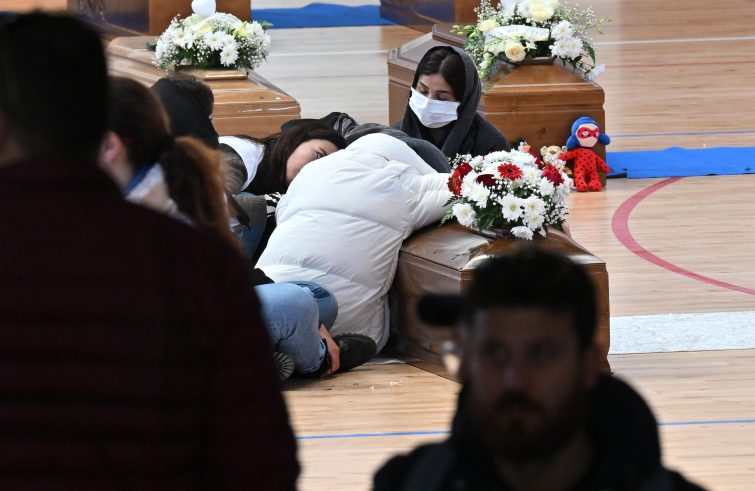
Faced with yet another tragedy off the shores of the Italian seaside town of Crotone we listened to the same old litany of bombastic statements, circumstantial comments, blame-shifting, political speculation, including unacceptable and utterly inappropriate remarks.
I personally felt ashamed, because I can no longer stand this “flaunted sorrow”: it is too similar to the old ploy of crying and recriminating and then doing nothing.
Legal immigration is possible, as well as urgently needed. And the recent estimates of 500,000 foreign workers needed for major areas of production activity in our country – ranging from tourism to building construction, from agricultural seasonal jobs to healthcare services – further testifies to this fact.
Managing the mounting inflows of refugees fleeing wars, natural disasters and persecution is indeed possible.
We proved it to be true with the millions of Ukrainians crossing the eastern borders. In fact they were not confined to camps, but welcomed throughout Europe. This was certainly the result of the extraordinary generosity of so many, but it was also due to the prompt enforcement of the unprecedented temporary protection clause of existing European rules. It is a matter of urgency too, for it is estimated that climate change will cause at least 200 million forcibly displaced persons in the next few years.
Some 30 years ago, the EESC (Economic and Social Committee of the European Union) had already drafted a specific plan for migration flow management, drawn up by an Italian trade unionist. The plan accounted for the needs of everyone – migrant persons as well as the legitimate expectations of countries of origin, transit, and destination. Until, in September 2015, in the wake of the tragedy off the shores of the island of Lampedusa, followed by the 2015 migration crisis, the European Parliament adopted an important joint resolution (current President Roberta Metsola was among the signatories) calling for a thorough reform of the Dublin Regulation and the creation of a consequential plan for the legal management of migrants.
Yet strong disagreements among EU member states caused continued the postponement of comprehensive solutions,
preferring to focus on the protection of external borders, refoulements, increasing difficulties inflicted on search and rescue workers, repatriations (which never proved successful except for very small numbers), and increasing preconditions imposed on countries of departure and transit.
This approach is not working: Turkey – which received more than €6 billion from the EU over the past few years to keep migrants from leaving – was the place of departure of the barge that sank a few meters off the Calabrian coast after days at sea.
The latest European summit of heads of State and Government on February 9 likewise prioritized strengthening security concerns further still, with a significant number of Member States calling for the explicit funding of walls and refoulement mechanisms at the EU’s land borders. As known, walls cannot be erected at sea, and while hoping that transit countries will prevent them from leaving, with increased European funds, we surrender to the certainty of new shipwrecks at sea. The Commission’s proposal for a Pact on Migration and Asylum has been lying stagnant on governments’ desks since 2020. The German presidency, with a leader like Angela Merkel, had called for a framework agreement. Nothing came of it. Today, after two and a half years, it is hoped that the current Swedish rotating presidency of the EU Council will progress towards an agreement under the next Spanish presidency. The roadmap agreed by the co-legislators (Parliament and Council), which Commission President Von der Leyen insists on, includes no less than nine different legislative proposals that address all matters at stake – including the reform of the Dublin Regulation – to be finalized before the 2024 European elections. The EU Parliament gives priority to progress in the areas of migrant reception, resettlement and qualifications, while the Council prioritizes further concessions on fingerprints, screening, secondary migration and repatriation.
The Italian President’s rightful appeal should thus be met with an extraordinary effort on the part of the Italian government,
along with the governments of European Mediterranean countries, in order to secure the consensus of the most reluctant countries and finally reach an agreement on shared solutions.
The delusional “migration problem” perspective must be brought to an end, and we should all start thinking together about the “opportunities” for governing this historic, inevitably mounting phenomenon in a civilized manner, not least because the real “pull factor” is the aging of European societies and the growing manpower shortage. Finally, it should be remembered that if Europe loses its “soul” of reasoned compassion, which it proved to be capable of with Ukraine, Europe will lose its way.
(*) Former President European Economic and Social Committee











